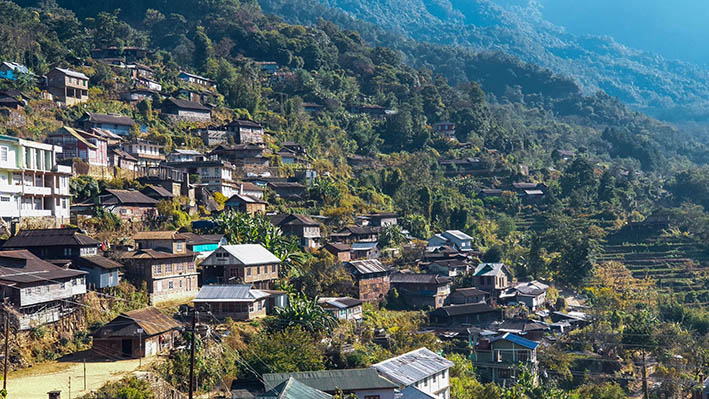Debates on the controversial law, the Armed Forces Special Powers Act, AFSPA-1958, has stormed back into centre stage in the wake of the outrage against the killing of 14 innocent coal mine labourers on December 4 evening in the Mon district of Nagaland, home of the Konyak Nagas. The ambush by Indian Army para commandos which is responsible for the tragedy it seems was intended as another surgical strike, but unfortunately an ill-conceived one. Of eight travelling in a pickup truck, six were killed on the spot. Seven more died when villagers from the nearby Oting village arrived upon hearing the gunshots and attacked the ambushers with machetes and later also took out their ire on an Assam Rifles post. One Army trooper also died in the violence.
According to reports, the ambush was based on an Army intelligence of Naga militants’ movement in the area, and in the true nature of a surgical strike which crucially depends on the element of surprise, the intelligence report or the intent to act on it by the Army, were not shared with the local police or Assam Rifles based in the area.
Many are left surprised that even the Assam Rifles, India’s oldest paramilitary force founded in 1835, officered by Indian Army officers on deputation, based primarily in the Northeast and tasked specifically with counterinsurgency responsibilities, was kept in the dark. Had this not been so, things may not have been so horribly wrong. Now that the Government of India has indicated an enquiry led by an Army officer of Major General rank would be instituted to probe the incident, one of the questions everybody expects an answer is related to this. Why was an Army unit based in Assam chosen for this secretive operation in Nagaland, and why were the Assam Rifles and police bypassed?
As the dusts from the violence of December 4 evening begin to settle, there are many more intriguing questions emerging. Practically all Naga underground militant factions are now in a ceasefire agreement with the Government of India so which of these groups were the Army intelligence tracking. Even if these groups were still engaging in unlawful activities such as extortion and intimidations, these should have amounted to breaches of ceasefire ground rules and not challenges to the Indian state.
Alternately, if it is a group outside the ceasefire agreement that the Army was tailing, then it would have to be the Yung Aung faction of the National Socialist Council of Nagaland (Khaplang). But this group is essentially Myanmar based. Is this faction still seen as a threat to India’s integrity?
What is also confounding is, why did the ambush party go straightaway for the kill and not first try to have their targets surrender. From testimonies of two survivors of the ambush who are now fighting for their lives in a hospital in Assam, they were attacked without warning, and the attack continued though none tried to flee.
As the ambushers, the Army troopers would certainly have chosen a superior position. They would also have calculated their number and arsenals in order to be in a position to overwhelm the adversary. This being so, it should not have been a problem for them to block the single pickup truck trudging along a narrow winding hill road, and put the occupants in a hopeless position even if they were actual insurgents and armed, to force them to surrender. Why wasn’t even an attempt made for such an outcome?
There are now many more charges widely shared on the social media, some outlandish but many plausible. One hopes the enquiry will also consider them and put them to rest with irrefutable facts for they will be crucial for the people, in particular the Nagas, to regain the trust in the establishment destroyed by this episode.
But beyond the enquiry, the Oting massacre has also opened up an old wound Nagas and the rest of the Northeast share – the Armed Forces Special Powers Act, AFSPA-1958. Two chief ministers, Nagaland’s Neiphiu Rio and Meghalaya’s Conrad Sangma, have come out to call for the repeal of this Act. Though their counterparts in the other Northeast states have remained tight-lipped so far, many civil organisations are joining the chorus calling for the Act’s abrogation.
The AFSPA gives sweeping powers to Central armed forces while operating in areas the Act is promulgated. These include, the power to shoot or use power to the extent of causing death merely on suspicion; to destroy structures believed to be insurgent hideouts; enter homes, search and arrest without warrant etc. Above all, security personnel operating under the Act are protected from persecution in courts for their actions except with the prior sanction of the Central government.
Decades of counterinsurgency operations under AFSPA has ensured a climate of impunity in the region and security forces have come to internalise a sense that no action of theirs, committed under this act will be legally accountable, much less attract penalties. The danger from this is obvious. The present case is evidence how real this danger is.
It is true extraordinary situations would demand extraordinary measures, and the AFSPA is one such. Arguments have also been forwarded that without the AFSPA there would be no legal means to have the Army take on policing duty. To this the answer is, Parliament has power to amend or make new laws fit for the needs of the time. AFSPA could also be changed thus. Indeed several Central government commissions, including the Jeevan Reddy Commission and Santosh Hegde Commission, appointed to look into the nature of the AFSPA had recommended precisely this. Unfortunately, none so far has been taken.
First published in The New Indian Express. Click here to read original story.












